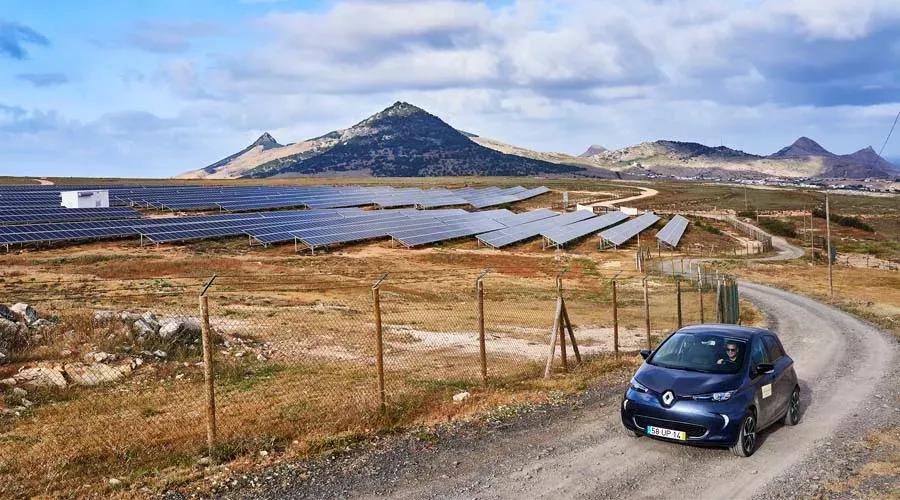| Update: The project was successfully completed at the end of 2022 and handed over to the responsible energy provider and partner Empresa de Electricidade da Madeira S.A.(EEM). Over four years, The Mobility House was able to gain important insights into the interaction of different players in the energy system as well as actually increase the use of renewables through the operation of the networked system. These insights will be used in the further development of The Mobility House's technologies. |
Since the beginning of the project in early 2018, the three project
partners have been working to increase the share of wind and solar power
plants through the intelligent integration of electric cars and second-life
battery storage systems. For this purpose, TMH has developed an intelligent
software, the so called "Marketplace". It optimizes the interplay of electric
cars, stationary second-life battery storage and bidirectional electric
vehicles (Vehicle-to-Grid, V2G), which are capable of feeding back energy from
their batteries to the electricity grid.
Renewable energies
(wind and solar) currently account for around 15 % of the island's electricity
supply. The flexible system currently includes 22 unidirectional and
bidirectional electric cars from Renault and two stationary battery storages
from second-life Renault vehicle batteries. It ensures the optimization of the
electricity generation capacity and can be seen as a groundwork for further
efficient development of renewable energies. The flexible cloud platform
"Marketplace" fully harmonizes demand and supply of the different producers
and consumers. If there is a surplus of renewable energy, this power is
buffered in the stationary storage and the electric cars. If there are clouds
covering the photovoltaic system and calm periods slowing down the generation
of wind energy, the stationary storage and the bidirectional vehicles feed
back their energy into the system. The unidirectional electric cars do not
charge in this case. This way, fluctuations in production are being
compensated for.
In order to meet the mobility needs of the
users at all time, they can input via an app at which departure time how much
energy is needed. The system then ensures that there is at least that much
energy in the battery of the vehicle. Thus, the desired minimum range of the
vehicle is available when needed.
The "Marketplace" proves that the sectoral coupling between the energy and the
mobility world is technically possible. Porto Santo is the first project in
the world to intelligently control the three forms of flexibility - intelligent charging, Vehicle-to-Grid and second-life battery storage - via one central software
platform. On a small scale the three project partners are already testing the
integration of technologies that can support the energy transition on the
continent as well.
The pilot system is the foundation for the
planned expansion of Porto Santo's energy supply with green electricity and
proofs that various requirements can be intelligently linked with one another
so that the share of renewable energies can be increased. The next goal is to
get both power generation and mobility on Porto Santo completely free from
fossil fuels - currently most of the electricity for the island comes from
diesel generators. Gradually the entire system will be supplemented by
additional electric vehicles, further stationary storage and other solar and
wind power plants. The "Marketplace" software can flexibly integrate these
expansions into the overall system and thereby ensure a constant and reliable
power supply.
